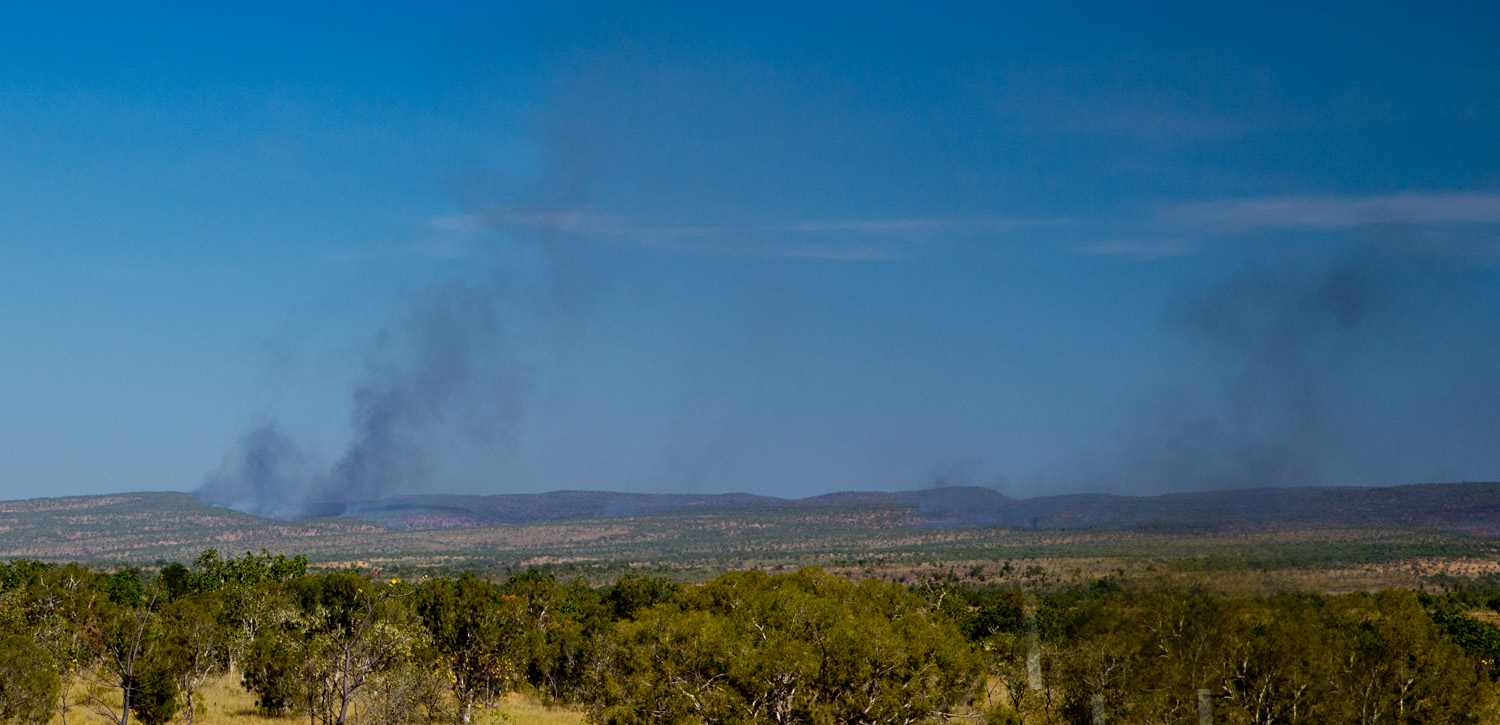There's nothing quite like sitting around a warm campfire with a glass of port under the stars. However, we've had surprisingly few campfires on the trip with most national parks and conservation areas banning or restricting fire use.
Certainly people here have strong opinions about fire use and perhaps overuse in the Kimberley. Its about finding the right balance.
If you've ever lived in the top end and stood neck deep in spear grass towards the end of the dry season you'll know it feels like a tinderbox. Dry season burn offs have been part of aboriginal life for tens of thousands of years but today these include matches from cars and incendiary drops from helicopters.
Down at Mornington Wildlife Camp the AWC with some traditional owners has designed a fire program that also involves some stations and a fair extent of Central Kimberley. We were told of a huge fire a few years ago that swept from the NE down through the country blackening all country and burning for weeks. The new program burns the land in carefully selected patches early in the season so that when big late dry season fires do occur they don't cause as much devastation.
Of course it's not only the vegetation that suffers in a big fire. We were told the story of a collared feral cat at Mornington that normally has a restricted territory but which after a big fire traveled quite a large distance to patrol the edge of the fire front catching all the small fauna as they escaped, then returned back to its normal hunting ground.
Our journey into the Mitchell Plateau was a hazy one with burning ground and fallen trees along the track to the falls. In fact many places we've visited have been recently burnt and our feet are often black from sooty ground. Rising smoke and hazy skies are most definitely something to be expected traveling in the Kimberley in the Dry.
Fires coming into Kununurra
